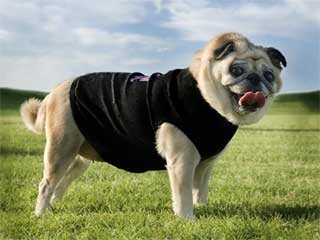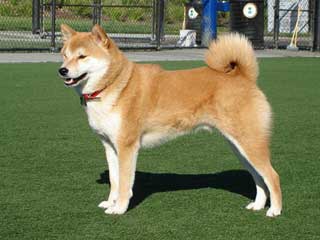| Grooming: |  |  |  |  |  |  |
| Shedding: |  |  |  |  |  |  |
| Energy Level: |  |  |  |  |  |  |
| Protection: |  |  |  |  |  |  |
| Watch Dog: |  |  |  |  |  |  |
| Group: | Toy |
| Size: | Small |
| Life Span: | 12-15 years |
| Height: | Male: 10-14 inches |
| Female: 10-14 inches | |
| Weight: | Male: 14-18 lbs |
| Female: 14-18 lbs |
Pug Facts
| Coat : | Fine, soft and glossy |
| Gait : | Free and jaunty |
| Color(s) : | Fawn or black |
| Living Area : | Any |
| Hair Length: | Short |
| Exercise Need : | Daily walk |
| Recognized By : |
(CKC) Canadian Kennel Club (FCI) F�d�ration Cynologique Internationale (AKC) American Kennel Club (UKC) United Kennel Club (KCGB) Kennel Club of Great Britain (CKC) Canadian Kennel Club (ANKC) Australian National Kennel Council (NKC) National Kennel Club (NZKC) New Zealand Kennel Club (APRI) America Pet Registry, Inc. (ACR) American Canine Registry (DRA) Dog Registry of America |
| Date of Origin : | Ancient |
| Place of Origin : | China |
| Todays Use : | Companion Dog |
| Originally Used : | Companion Dog |
| Other Name : | Chinese Pug, Dutch Bulldog, Dutch Mastiff, Miniature Mastiff |
Pug Information
Pug Description:The Pug is an ancient dog breed believed to have been imported from China. The earliest references to pug like dogs date as far back as 551 BC, when they were carried by the royal dynasty of China. However, the modern pug is believed to be a result of cross-breeding between the Pekingese and the King Charles Spaniel. This small dog breed is said to have been taken to Europe by the East India Company sometime in the 16th century. Since times immemorial, this toy dog breed has been a favorite of the royal class. It was only in the 19th century that this breed began making its way in homes and it was finally recognized by the AKC in 1885. |
Pug Care & Grooming:Pug is a maintenance breed. They shed a lot seasonally and hence, their coat should be brushed at least twice a week to keep them looking well groomed. Brushing its coat daily with a soft comb helps in less shedding of the fur and they should be bathed only when necessary. Because of the many skin folds, pugs also tend to accumulate a lot of dirt on their face. Cleaning them regularly with warm water and a Q-tip is strongly advised to avoid serious infections. Their nails also need to be trimmed regularly as they grow faster than those of other dog breeds. Pugs should be brushed daily to avoid any infections of the mouth and to keep their milk tooth in optimum condition. Eyes and ears of the dog should be cleaned on regular basis. |
Pug Health Problems:Pug is one of the long living dog breed with few major health problems. They are prone to some health issues like Hip Dysplasia, Epilepsy, Obesity, eye and heart problem, PDE (Pug Dog Encephalitis) etc. Pugs are sensitive to very high and very low temperature, so all care should be taken when taking them out. |
 | Breed: Pug Name: Ophelia Age: 7.6 years Sex: Female About Ophelia : Pugs are a fun loving breed and do very well with young kids. |
 | Breed: Pug Name: Kisi Age: 0.10 years Sex: Female About Kisi : silent and too cute habits |
| Group: | Working |
| Size: | Large |
| Life Span: | 10-12 years |
| Height: | Male: 26-30 inches Female: 24-28 inches |
| Weight: | Male:100-115 lbs Female: 70-90 lbs |
| Color: | White |
| Description: | The Kuvasz is arguably the oldest identifiable breed of dog in the world today. Although the exact..... |











